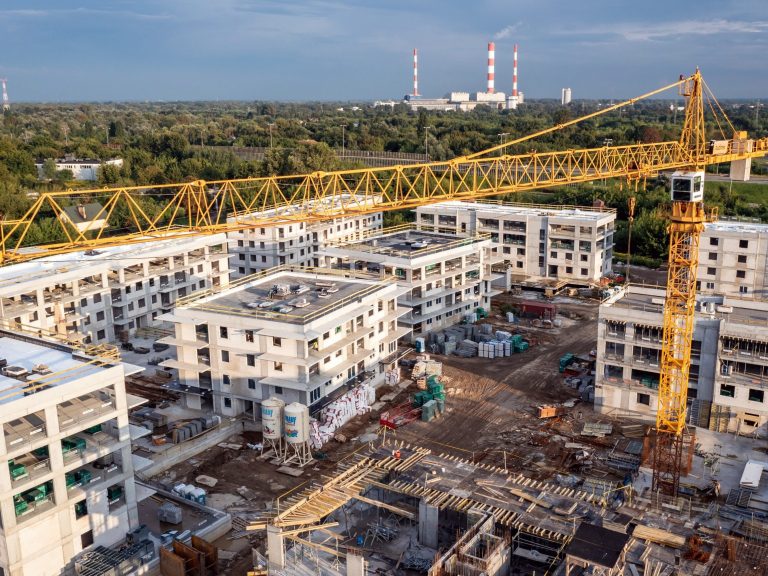Impaled on the walls by developers

Have you bought a flat in the last few years? You probably paid for space you don’t have
The development market in Poland is currently going through difficult times due to very limited access to mortgage loans. However, the previous few years were a time of real boom. The high demand for apartments meant that developers wanted to maximize their profits. For this reason, smaller or larger “pathologies” have appeared on the market. One of them, according to the author, is the sale of real estate with a smaller usable area than specified in the contract and legal provisions.
If you bought a flat or house from a developer in the last few years, you may have fallen victim to this practice. However, you may still have time to do something about it.
People who have bought or were interested in buying an apartment know that the final price is calculated based on the rate per square meter. It is also known that you pay for the so-called “usable surface”, i.e. the floor inside the walls, on which we can put our foot and which we can arrange as we wish. So much for the theory.
However, the practice is completely different. Well, developers very often also include the area under the walls, specifically the walls dividing individual rooms, into the usable area. It is difficult to “use” such floor space under the walls. You won’t be able to set foot or sofa there. As a result, when buying, for example, a 50-square-meter apartment, you actually look at the walls and the floor can be received approx. 47 square meters. This is a significant difference considering that 3 square meters is often the area of, for example, the entire bathroom or hall.
Some developers clearly inform on the floor plans of the apartments about the usable area in individual rooms and in a separate position – “under the partition walls”.
Developers claim that the area under partition walls was allowed to be included in the usable area thanks to the area counting standard that was in force until recently. They quote a fragment from which it follows that the usable area may include the area of ”elements suitable for disassembly, such as partition walls (…)”. The problem is that brick and plastered walls, in which utilities are often routed – gas, water or electrical installations – are difficult to define as “walls” that can be dismantled. These are partition walls that constitute permanent building partitions, so they do not have the “removable” feature.
Walls that can be dismantled include partitions such as accordion, modular or sliding walls, designed with disassembly in mind. If we consider that brick walls are removable, what partition walls cannot be dismantled? Exactly. This opinion is shared by many architects and surveyors who analyzed the case, and more and more often we hear about court judgments in which consumers prevail.
Of course, there is no reason to delude yourself that someone will add the missing meters. However, if we pay even PLN 10,000 per square meter of usable space, and it turns out that we are three meters short, it is difficult to question the conclusion that we paid PLN 30,000 too much and someone got rich at our expense.
Even though the problem is common and the chance of recovering several or even several dozen thousand zlotys is very real, consumers do little about it.
Why? First of all, they are not aware of the problem. A very small number of people, when buying an apartment, analyze development contracts with lawyers and measure their premises before or immediately after the purchase. Some consumers, aware of the problem, decide to wait.
In Poland, there is a common belief that a case is certain when there is uniform “case law”, and before that there is no point in risking a court case, which involves costs.
Poles learned jurisprudence, among others: on the basis of franc issues. However, this is a risky approach. There is no precedent system in Poland. The court’s task is to resolve the case on the basis of facts and law, and the rulings of other courts or judges in similar cases do not bind it in any way. Only some resolutions of the Supreme Court are binding, and it may never comment on the usable area.
If there are no mass claims against developers, such a well-known and high-profile line of jurisprudence may never emerge, and even if it does, the claims of many waiting consumers will simply be time-barred. However, the most important thing is probably the fact that only after sending a request for payment to the developer can interest for delay be calculated. Currently, statutory interest for delay under the Civil Code is several percent per year (variable) – much higher than the interest on bank deposits, and this is money that is lost irretrievably while waiting.
The issue of claims related to incorrect calculation of the usable area of apartments may often occupy courtrooms in the coming years. In particular, consumers benefit from the fact that the cases of at least several owners can be combined into one court proceeding, which reduces costs.
Developers’ ally will be the lack of action on the part of consumers who, due to economic difficulties (inflation, high loan installments) and uncertainty, are reluctant to make claims.
Non-governmental organizations and lawyers experienced in similar cases can play an important role in changing this attitude, as they will reliably explain whether the claims in a given case are justified and make economic sense, and if so, how to prepare for such a case.
About the author:
Adam Rusiłowicz, Coordinator of the housing community and development services department at the Ryszewski i Szubierajski Sp. Law Firm. k. Previously, he was associated with consumer organizations for many years, including legal affairs manager at the Consumer Foundation. Ryszewski i Szubierajski Law Firm Sp. k. helps real estate buyers in disputes with developers, both in individual cases and representing the interests of entire housing communities.






